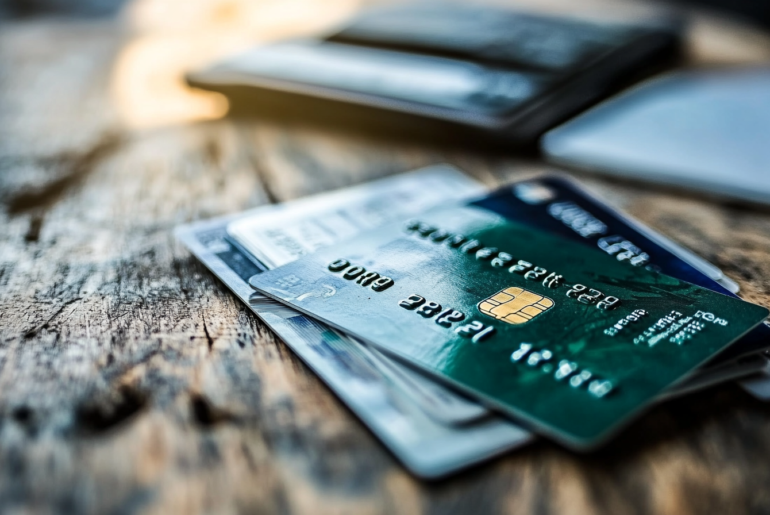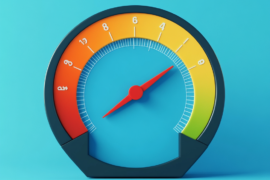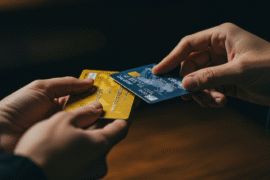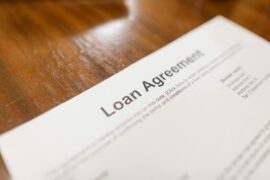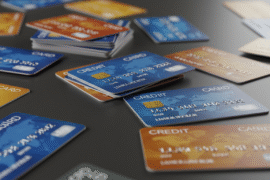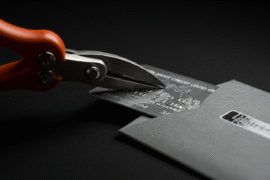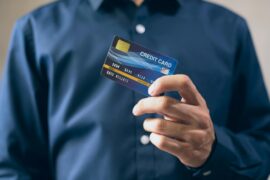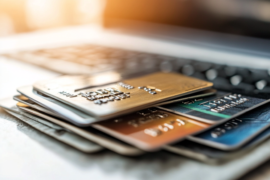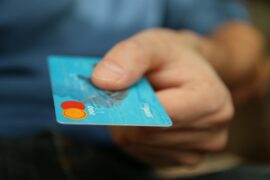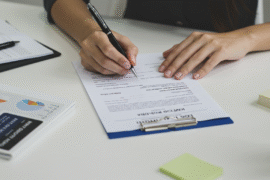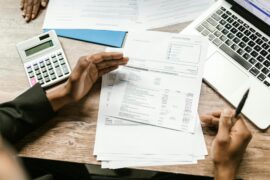This article may contain references to products or services from one or more of our advertisers or partners. We may receive compensation when you click on links to those products or services. Nonetheless, our opinions are our own.
The information presented in this article is accurate to the best of our knowledge at the time of publication. However, information is subject to change, and no guarantees are made about the continued accuracy or completeness of this content after its publication date.
Are you sick of being in debt with your credit cards? You are not the only one. Many people feel like they can’t get ahead because of high interest rates and few payment options. But things can get better. Imagine how nice it would be to not have to worry about credit card bills. This article will show you seven easy ways to get rid of your credit card debt for good. You can take control of your money and move toward a life without debt by doing something and making better money habits.
- Identifying and Understanding Your Debt Situation
- Creating a Budget That Works for You
- Exploring Debt Snowball and Debt Avalanche Methods
- Make More Than the Minimum Payment Each Month
- Negotiating with Creditors for Better Terms
- Building an Emergency Fund to Avoid Future Debt
- Utilizing Financial Windfalls Strategically
- Maintaining Your Momentum After Paying Off Debt
- Conclusion
- Frequently Asked Questions
- Recommended Reads
Identifying and Understanding Your Debt Situation
The first step to getting your money back on track is to understand your debt. Check your credit card balances carefully. Keep an eye on interest rates and when payments are due every month. Write down all of your debts. Consider how each one affects your money situation. To get a better view, you might try making a simple table like this:
| Credit Card | Balance | Interest Rate | Minimum Payment |
|---|---|---|---|
| Card A | $2,000 | 19% | $50 |
| Card B | $1,500 | 15% | $40 |
| Card C | $3,000 | 22% | $75 |
Next, put your debts in order of how important they are and how much interest they charge. You could pay off your smallest debts first to get a quick win (the snowball method). But think about how much money you could save if you only used cards with high interest rates. This analysis gives you more information and helps you plan your payments better. Keep in mind that every trip begins with a single step. Learning about your debt is a good and smart way to get rid of it.
Creating a Budget That Works for You
Making a budget that fits your life is very important for keeping track of your money and paying off your credit card debt. The first step is to find out how much money you make each month. This includes not only your salary but also any extra money you make, such as from freelance work or renting out a room. Once you have this much money, look at how much you spend each month. Put these into two groups: needs (like food, housing, and transportation) and wants (like going out to eat and having fun). This will help you figure out where your money goes and where you can save.
To make budgeting easier, you can try these tips:
- Use budgeting apps: Tools like Mint or YNAB can make it easy to track your income and expenses. They give you quick insights into how you spend your money.
- Set realistic limits: Set clear amounts for each part of your budget. Remember to think about your lifestyle and what is most important to you.
- Review and adjust regularly: Your budget can change. Check it every month to see if you need to change it due to income or expenses. Adjust it as needed.
Think about creating a simple budget table to stay organized:
| Category | Budgeted Amount | Actual Amount |
|---|---|---|
| Housing | $1,200 | $1,150 |
| Utilities | $300 | $290 |
| Groceries | $400 | $350 |
| Entertainment | $200 | $180 |
If you take a close look at your income and expenses, you’ll be able to see your money choices more clearly. Stay focused, and remember that small changes can lead to big savings. This will help you get closer to living without debt.
Exploring Debt Snowball and Debt Avalanche Methods
The debt snowball and debt avalanche methods are two common ways to deal with credit card debt. Both choices can help you get to financial freedom. But they go about it in different ways that fit their own personalities and money styles.
When you use the debt snowball method, you pay off your smallest debts first. Every time you pay one off, you feel good and motivated. This method makes you feel better about how far you’ve come. The debt avalanche strategy, on the other hand, focuses on debts with high interest rates. Over time, this can help you save more money on interest. It may take longer to pay off your first debt, but the long-term benefits are huge. You should pick one of these ways to pay off your debt based on how you feel about it and how much you want to save for the future.
Here’s a simple comparison to help you decide:
| Method | Focus | Time to Payoff | Interest Savings |
|---|---|---|---|
| Debt Snowball | Smallest Balance | Quicker Wins | Less Effective |
| Debt Avalanche | Highest Interest Rate | Longer Initial Phase | More Effective |
Check your finances and what you like to help you make a good choice. Do you want to save money over time, or do you want quick wins to keep you going? Both options can help you live without debt, so it doesn’t matter which one you choose. Pick the one that feels right for you and helps you feel more in charge of your money.
Make More Than the Minimum Payment Each Month
If you pay more than the minimum amount each month, you may be able to better handle your credit card debt. You can pay off your balance faster and pay less interest in the future if you make larger payments. This plan works well with both the debt snowball and debt stacking methods because it helps you get out of debt faster. Remember that every extra dollar you pay brings you closer to being debt-free.
Voted "Best Overall Budgeting App" by Forbes and WSJ
Monarch Money helps you budget, track spending, set goals, and plan your financial future—all in one app.
Get 50% OFF your first year with code MONARCHVIP
Negotiating with Creditors for Better Terms
If you have too much credit card debt, don’t wait to call your creditors and ask for better terms. A lot of people don’t realize how important it is to talk to them. A quick talk can really help. First, make sure your money is in order. Make a note of how you’ve paid in the past and what your current situation is. When you talk about your problem openly, this will make you feel better.
Here are a few tips you can think about when you are negotiating:
- Be Honest: Share your money struggles without giving too many details. Creditors usually value honesty.
- Request Lower Interest Rates: A lower interest rate can really help with your monthly payments.
- Ask for a Payment Plan: Suggest a payment plan that helps you pay off your debt over time.
- Ask About Hardship Programs: Many creditors have programs to help people who are facing money problems.
To help you understand what might happen, here’s a simple table showing how changing your interest rate can affect your repayment:
| Current Rate | New Rate | Monthly Payment | Total Interest Paid |
|---|---|---|---|
| 20% | 15% | $200 | $1,500 |
| 20% | 10% | $175 | $1,100 |
If you negotiate, you might be able to get more money in the future. You can ask for better terms if you want. People you owe money to are often willing to work with you to keep your business going.
Building an Emergency Fund to Avoid Future Debt
Making a safety net for yourself is a smart way to make sure your future is safe. Your emergency fund is your safety net. It helps you pay for unexpected expenses without using credit cards. A lot of people get into debt because they have to pay for medical bills, car repairs, or lose their job. You can slowly build up a reserve by saving a small amount of your income each month. This gives you peace of mind and stability.
Here is how you can start your emergency fund:
- Set a Clear Goal: Try to save enough for three to six months’ worth of living costs.
- Open a Savings Account: Think about using a high-yield savings account to grow your interest.
- Automate Your Savings: Set up automatic transfers from your checking to your savings account. This makes saving easier.
- Start Small: If saving a big amount seems hard, start with a small monthly goal. You can even begin with just $50.
Here’s an easy table to show how fast your fund can grow with regular savings:
| Months | Savings per Month | Total Accumulated |
|---|---|---|
| 3 | $50 | $150 |
| 6 | $100 | $600 |
| 12 | $150 | $1,800 |
You can not only protect yourself from getting into debt in the future, but you can also feel better about how well you handle your money by following these simple steps. Take this chance to improve your financial situation; your future self will thank you.
Utilizing Financial Windfalls Strategically
If you get money you didn’t expect, like a tax refund, a bonus, or an inheritance, you should think about how to use it wisely to make your finances safer. Instead of spending it on things you don’t need, here are some smart ways to use that money:
- Grow Your Emergency Fund: Put some of the money into your emergency fund to help it grow faster and protect your finances.
- Invest in Retirement Accounts: Consider using part of the money to add to your retirement accounts. This is a way to save for your future.
- Pay Off High-Interest Debt: Focus on paying off any debts with high interest, like credit card debt. This can save you money in the long run and help your financial situation.
- Fund Important Goals: Use the money to support important goals, like saving for a house or starting a college fund for your kids.
By using unexpected money wisely, you can make real progress toward financial stability and a secure future.
Should I Answer Debt Collector Calls?
You should be careful and aware when debt collectors call you. You might want to just ignore these calls. But answering them can help you figure out what’s going on with your money and how to fix it. Here are some steps you can follow when dealing with debt collector calls:
- Check the Debt: Ask for written proof of the debt to make sure it is correct and real.
- Talk Clearly: Have clear and honest conversations with the debt collector to talk about payment plans or settlements.
Maintaining Your Momentum After Paying Off Debt
After you pay off your credit card debt, it is important to keep making progress. It can feel good to relax, but staying focused will help you create a strong base for your money future. Start by making a new budget that encourages you to save and invest. You might want to put some of the money you used to pay off debt into a savings account. This will not only help you prepare for emergencies but will also help you be careful with your spending.
Also, practice mindful spending. Look closely at what you buy. Put your needs before your wants. Here are some ideas to help you:
- Set Money Goals: Whether it’s saving for a trip or for retirement, clear targets can keep you motivated.
- Check Your Progress: Use apps or sheets to track your savings and investments.
- Look at Your Budget Often: Regular changes can help with shifts in income or expenses.
- Create an Emergency Fund: Try to save three to six months’ worth of expenses to protect against unexpected costs.
| Goal | Timeframe | Target Amount |
|---|---|---|
| Emergency Fund | 6 Months | $6,000 |
| Vacation Savings | 1 Year | $2,000 |
| Retirement Contributions | Annual | $5,000 |
By building these habits, you will not only keep your money moving forward but also feel strong enough to handle money problems in the future.
Conclusion
It may seem impossible to pay off credit card debt, but it’s possible if you have the right strategies and a clear plan. You can start making real progress by learning about your debt, making a budget that works for you, and picking the best ways to pay it off, such as the debt snowball or debt avalanche methods. Also, working on building an emergency fund, talking to your creditors, and making smart use of unexpected money can all help you get closer to financial freedom. Keep in mind that you need to be patient and consistent. You are getting closer to a life without debt with each small step you take. Your financial goals are within reach. Stay focused, stay disciplined, and celebrate your progress along the way.
Frequently Asked Questions
What are some good strategies for making a budget?
The first step in making a budget is to keep track of how much money you make and how much you spend. Make a list of where your money comes from each month. After that, put your spending into groups. Rent, groceries, and utilities are all necessities. Eating out and going to the movies are examples of non-essentials. This helps you figure out where your money goes and where you can cut back. You can stay on track and work on paying off your debt by setting reasonable limits for each category.
What are some risks to watch out for when trying to pay off credit card debt?
Getting new debt while paying off old debt and not having a clear plan for how to pay it off are two common mistakes. It’s also common to not know all of your costs or to forget about costs that don’t happen often, which can mess up your budget. Not changing your lifestyle is another mistake. You may need to make big changes to get out of debt.
Why is it important to check my money progress often?
You can change your budget more easily if you check your money often. It also lets you see how you pay off your debts and celebrate big events. This habit keeps you accountable and pushes you to stick to your plan. Also, keeping an eye on your credit score can show you how well you’re doing and where you need to improve.
How can I stay motivated while trying to pay off my credit card debt?
It can be hard to stay motivated. Setting clear goals and celebrating small wins can help. Getting your family or friends involved can also help you stay motivated. Set goals for yourself and give yourself a reward when you reach them. This gives you support. You can also stay focused on living without debt by remembering your goals.

Reviewed and edited by Albert Fang.
See a typo or want to suggest an edit/revision to the content? Use the contact us form to provide feedback.
At FangWallet, we value editorial integrity and open collaboration in curating quality content for readers to enjoy. Much appreciated for the assist.
Did you like our article and find it insightful? We encourage sharing the article link with family and friends to benefit as well - better yet, sharing on social media. Thank you for the support! 🍉
Article Title: Get Rid of Credit Card Debt: Simple Ways to Succeed
https://fangwallet.com/2025/08/01/get-rid-of-credit-card-debt-simple-ways-to-succeed/The FangWallet Promise
FangWallet is an editorially independent resource - founded on breaking down challenging financial concepts for anyone to understand since 2014. While we adhere to editorial integrity, note that this post may contain references to products from our partners.
The FangWallet promise is always to have your best interest in mind and be transparent and honest about the financial picture.
Become an Insider

Subscribe to get a free daily budget planner printable to help get your money on track!
Make passive money the right way. No spam.
Editorial Disclaimer: The editorial content on this page is not provided by any of the companies mentioned. The opinions expressed here are the author's alone.
The content of this website is for informational purposes only and does not represent investment advice, or an offer or solicitation to buy or sell any security, investment, or product. Investors are encouraged to do their own due diligence, and, if necessary, consult professional advising before making any investment decisions. Investing involves a high degree of risk, and financial losses may occur including the potential loss of principal.
Source Citation References:
+ Inspo
There are no additional citations or references to note for this article at this time.
